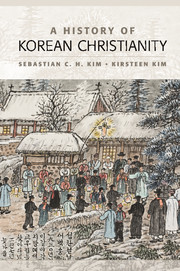Book contents
- Frontmatter
- Contents
- Illustrations
- Acknowledgements
- Abbreviations
- Maps
- Chapter 1 Introduction
- Chapter 2 Believers, Martyrs and Missionaries, 1592–1876
- Chapter 3 Evangelism, Patriotism and Revivalism, 1876–1910
- Chapter 4 Oppression, Resistance and Millennial Hope, 1910–1945
- Chapter 5 Liberation, Service and Divisions, 1945–1961
- Chapter 6 Growth, Thought and Struggle, 1961–1988
- Chapter 7 Missions, Reconciliation and Public Life, 1988–Present
- Glossary
- Bibliography
- Index
Chapter 4 - Oppression, Resistance and Millennial Hope, 1910–1945
Published online by Cambridge University Press: 05 March 2015
- Frontmatter
- Contents
- Illustrations
- Acknowledgements
- Abbreviations
- Maps
- Chapter 1 Introduction
- Chapter 2 Believers, Martyrs and Missionaries, 1592–1876
- Chapter 3 Evangelism, Patriotism and Revivalism, 1876–1910
- Chapter 4 Oppression, Resistance and Millennial Hope, 1910–1945
- Chapter 5 Liberation, Service and Divisions, 1945–1961
- Chapter 6 Growth, Thought and Struggle, 1961–1988
- Chapter 7 Missions, Reconciliation and Public Life, 1988–Present
- Glossary
- Bibliography
- Index
Summary
The Japanese occupation of Korea, which began de facto in 1905 with the Protectorate, was formalised in 1910 by the annexation which brought the formal end of Korean sovereignty and of the Yi dynasty. The country became an ‘outer territory’ or extension of Japan. By this time the resistance armies had been driven into Manchuria and the Russian Maritime Provinces, and such was the Japanese stranglehold within Korea that military resistance was impossible. The size and powers of the Japanese military police had been increased, and these police now subjected Korea to ‘a reign of terror’ (Nahm 1989:219; cf. Kang Man-gil 2005:149, 158). Koreans felt humiliated and were also mystified by how Japan, whose earlier development had come from Korea, could now have such power over them (Ham Sok-hon 1985). During its occupation of Korea, which lasted until 1945, Japanese policy evolved and changed, and it had a significant influence on church life (Kang Wi-jo 2006).
Despite the dire political situation, the General Council of Evangelical Missions in Korea decided in 1910 to follow up the revival, which was intended to deepen faith, with an organised nationwide campaign targeting non-Christians. It aimed to reach ‘A Million Souls for Christ This Year’ and openly took advantage of this moment of ‘supreme national hopelessness’ to proselytise (T. S. Lee 2010:23–24; Paik Lak-geoon 1970:385; A. Clark 1971:185). The Bible Societies printed a million copies of the gospel of Mark, and revivalists from the United States were pressed into service. Christian adherents, who were estimated at only two hundred thousand believers, gave approximately one hundred thousand days of work to the campaign. Meetings were widely advertised, tracts were distributed systematically and house-to-house visits were made (A. Brown 1919:545). This movement inaugurated the pattern of revivalism that was to become characteristic of the Korean church (Paik Lak-geoon 1970:385–87, 413). But, not surprisingly, these activities antagonised the Japanese authorities, who were suspicious that this was some kind of revolutionary movement, and they intimidated those involved. Uniformed military police, along with spies, attended the special church services, and pastors were required to report to the police the names of converts, who were sometimes then threatened and harassed.
- Type
- Chapter
- Information
- A History of Korean Christianity , pp. 107 - 156Publisher: Cambridge University PressPrint publication year: 2014



